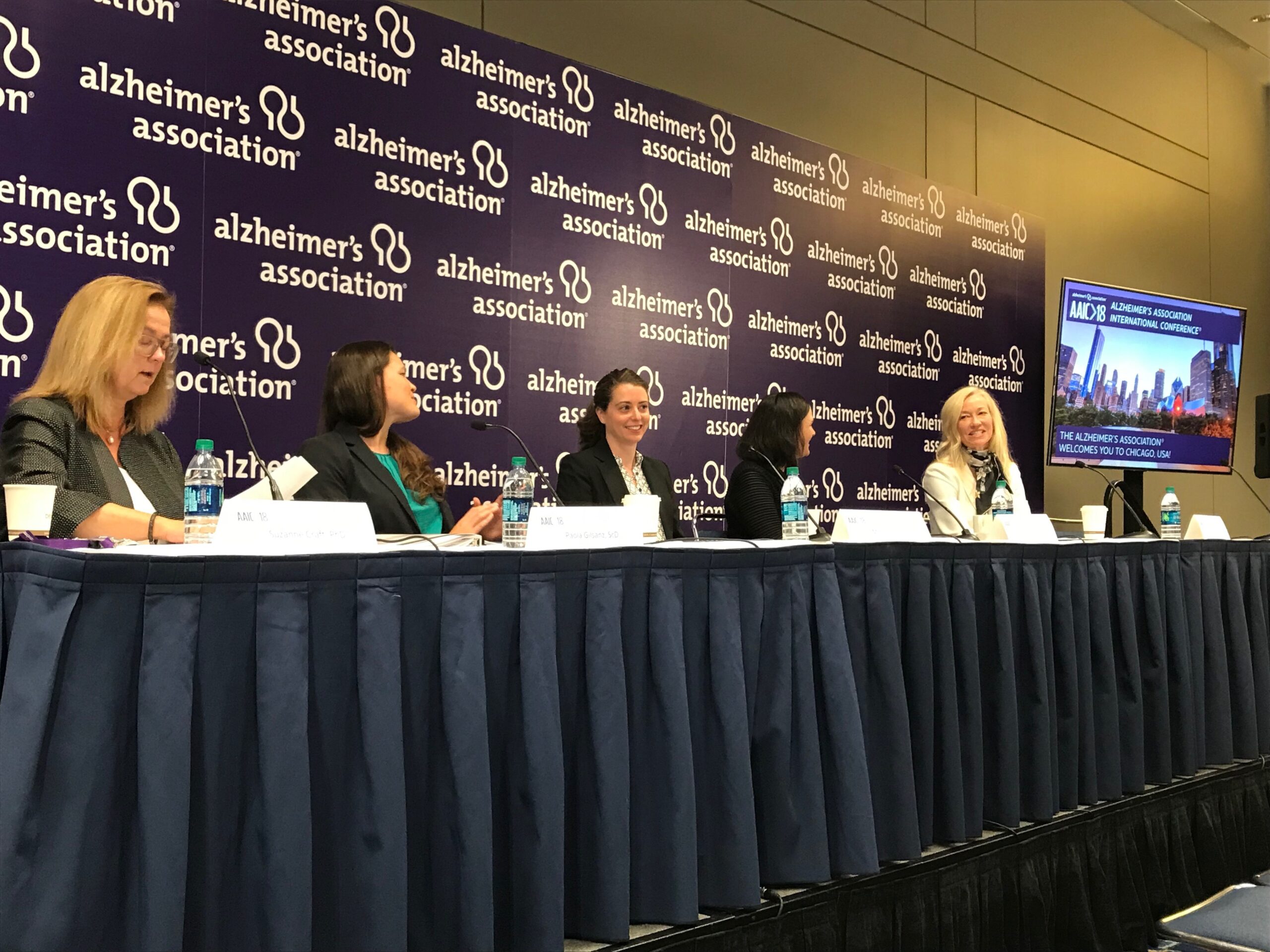By Rebecca Nebel, PhD, Director of Scientific Programs
Most of what we know about human health and disease is based on research on men. This is because, until the 1990s, women of reproductive age were actively excluded from most clinical trials. Thanks to efforts by many organizations, including ours, this is changing.
Women are now regularly included in medical research, and in 2016, the National Institutes of Health (NIH) put in place new guidelines requiring researchers to consider sex as a biological variable in all new grant applications.
Studying differences between women and men is beneficial for all. Women and men can present with different disease symptoms, making proper diagnosis a challenge, and they can respond to treatments differently, making disease management difficult. By studying sex differences and applying what we know to clinical practice, we can improve health outcomes for both women and men.
Take Alzheimer’s disease as an example. Two-thirds of those with Alzheimer’s are women. And while there’s a lot more work to do in this area, we know there are many differences between women and men in Alzheimer’s risk factors, etiology, pathology, and presentation (see full review).
I recently attended the Alzheimer’s Association International Conference (AAIC), where one session focused on the role that hormones play in cognitive aging and dementia risk for women. One study, led by SWHR Interdisciplinary Network on Alzheimer’s Disease Chair Dr. Pauline Maki (far right in above photo) set out to investigate the accuracy of Alzheimer’s diagnostic tests for women and men.
Verbal memory tests, such as remembering lists of words, are typically used to diagnose Alzheimer’s. However, women have a lifelong advantage in verbal memory compared to men, driven in part by estrogen, and they are able to sustain this advantage into the early stages of Alzheimer’s. This advantage begins to dwindle in more advanced stages the disease. While this allows women to sustain cognitive function for longer, it can also mask the disease, meaning women may not get diagnosed until they are in later stages of disease, limiting opportunities for early intervention.
Despite this well-known female advantage in verbal memory, sex is not adjusted for in verbal memory tests used to diagnose Alzheimer’s. By not accounting for sex differences in verbal memory cutoff scores, men who are cognitively normal may be diagnosed as having mild cognitive impairment and women who have mild cognitive impairment may be diagnosed as cognitively normal.
The study presented by Dr. Maki used sex-specific cutoff scores in verbal memory tests and found that by using a higher cutoff score for women, about 9% of women who were originally diagnosed as cognitively normal were reclassified as having mild cognitive impairment. Similarly, using a lower cutoff score for men, about 10% of men who were originally diagnosed with mild cognitive impairment were reclassified as being cognitively normal. Furthermore, these new diagnoses correlated better with their brain pathology, suggesting women and men were more accurately diagnosed using the sex-specific verbal memory cutoff scores.
Of course, this study will need to be replicated and expanded upon in more diverse populations. However, if other groups find similar results, it may suggest that different verbal memory cutoff scores are needed for women and men when diagnosing Alzheimer’s.
Research like this highlights the importance of studying differences between women and men and how we can apply this knowledge to improve diagnosis and treatment for both sexes.
